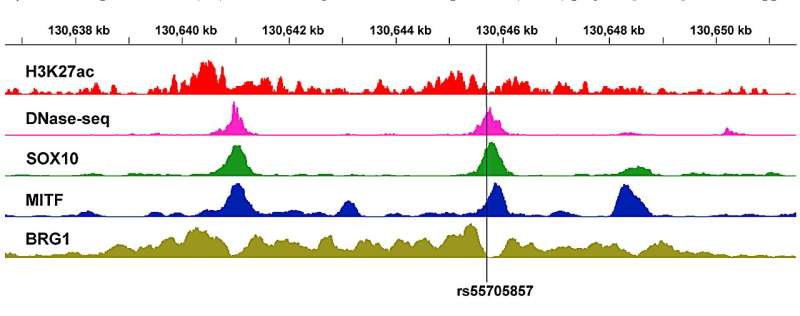This article has been reviewed according to Science X's editorial process and policies. Editors have highlighted the following attributes while ensuring the content's credibility:
fact-checked
peer-reviewed publication
proofread
Predicting the molecular functions of regulatory genetic variants associated with cancer

A new editorial paper titled "Predicting the molecular functions of regulatory genetic variants associated with cancer" has been published in Oncotarget.
Some of inherited human genetic variation can contribute to important phenotypic diversity, such as the varying degrees of individual susceptibility to developing certain health conditions and individual response to therapeutic interventions. To date, over 490,000 genotype-phenotype associations have been discovered through large-scale genome-wide association studies (GWAS); however, molecular functions of most of these discovered GWAS variants remain unknown.
In their recent editorial, researchers Jun S. Song and Mohith Manjunath from the University of Illinois at Urbana-Champaign discuss computational methods of genetic analysis using expression quantitative trait loci, frameworks for predicting regulatory genetic functions, application to transcription factors involved in cancer development and progression, and future implications for their methods in cancer research and precision medicine.
"There are several technical challenges hindering our understanding," the researchers preface their argument.
First, the effect size of a typical genetic variant—as measured in terms of the odds ratio of genotype occurrence in case versus control populations—is very small, suggesting that macroscopic systems-level phenotypic differences modulated by each variant may also be small and difficult to detect. Next, most reported variants reside in non-protein-coding regions of the human genome, indicating that they are likely affecting the regulation of some unknown target genes' expression. Finally, the discovered variants may not be functional themselves, but may be merely in genetic linkage disequilibrium with other functional variants.
"A promising approach to address these challenges is to integrate genomic, epigenomic, transcriptomic and machine learning methods to identify functional genetic variants and characterize their mode of action in regulating target genes," the researchers posit.
More information: Jun S. Song et al, Predicting the molecular functions of regulatory genetic variants associated with cancer, Oncotarget (2023). DOI: 10.18632/oncotarget.28451



















